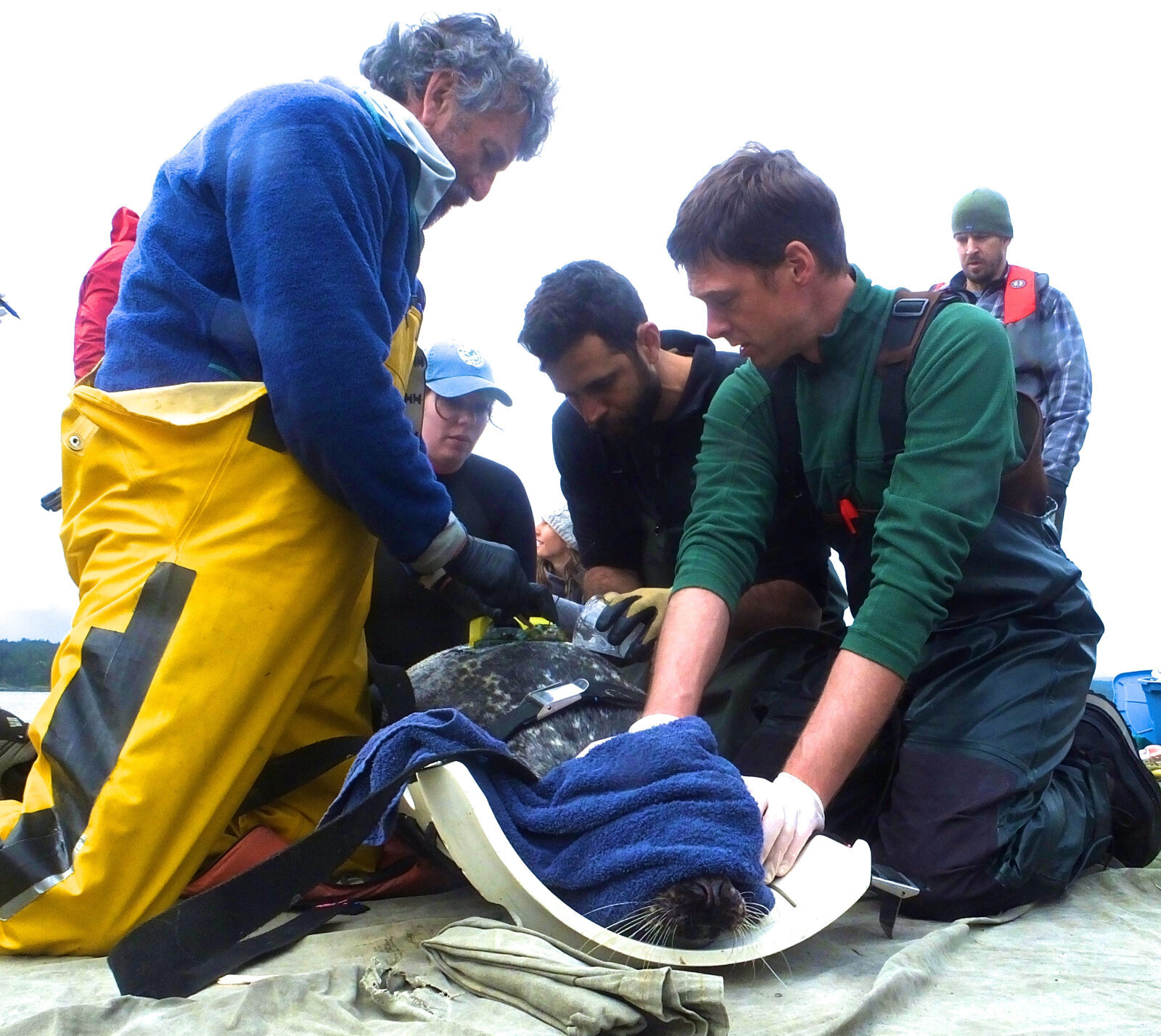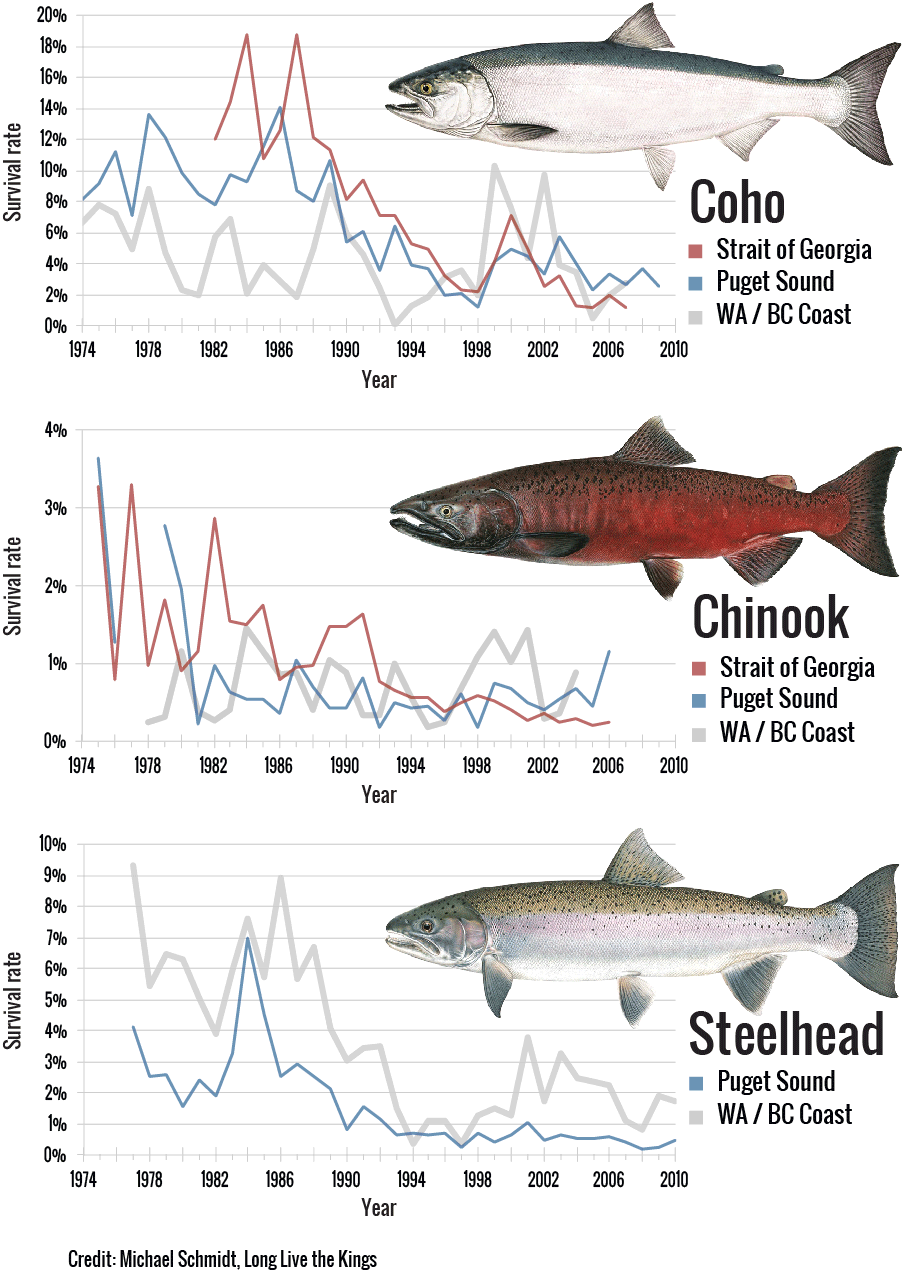Smith-Root Staff
Friday, July 08, 2016Each spring, juvenile steelhead exit their natal rivers and move into the Puget Sound as part of their seaward migration toward the North Pacific Ocean. Once in the salt water, these young fish migrate rapidly through the inland waters of Washington State, some of them traveling hundreds of miles in a matter of weeks as they seek their offshore foraging grounds.
Unfortunately, steelhead in the Puget Sound region have experienced a long term decline in survival during this critical outmigration period since the mid 1980s, a trend that has puzzled fisheries scientists for years. This year Smith-Root is participating in a major trans-boundary research effort (The Salish Sea Marine Survival Project) to help answer the question of why certain salmonid species experience high mortality rates shortly after entering the salt water.

To understand what is driving steelhead survival in Puget Sound, researchers look to the things that have changed significantly during the period of increasing steelhead mortality. One of the things that changed was an exponential increase in the number of harbor seals in Puget Sound. Seals during that period were recovering from decades of human caused population control measures that kept seal numbers low. Harbor seals in Puget Sound are now thought to be at carrying capacity (their upper population limit) and they are known predators of juvenile steelhead.
Smith-Root research scientist Dr. Austen Thomas is working with researchers from the Washington Department of Fish and Wildlife (WDFW) and NOAA on a two-pronged approach to assess how many juvenile steelhead are eaten by harbor seals in Puget Sound. Their first method is to quantify the amount of steelhead DNA in seal fecal samples, and then calculate how much mass of steelhead is likely being consumed by the seal population based on their bioenergetic needs. The second approach the researchers are using is to tally the number acoustic transmitters implanted in young steelhead that end up near seal resting sites — this indicates the steelhead was likely eaten by a seal and the tag was deposited at the haulout. Acoustic receivers glued to seals help to locate the tags that were implanted in steelhead.
"The data we are gathering this spring will be used to determine if harbor seals are a major cause of steelhead mortality in Puget Sound" says Thomas. "If we do discover that seals are eating large numbers of these young fish, the next step will be to determine if those fish are more vulnerable to predation than they used to be. Steelhead may be suffering from diseases or a lack of refuge habitat, which could lead to higher predation rates than we would otherwise expect."
